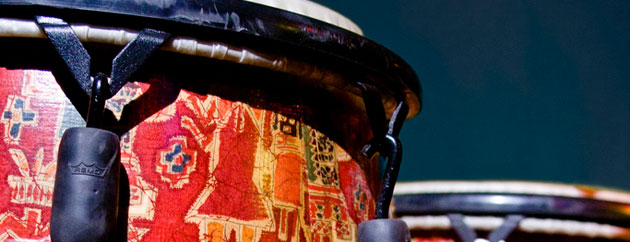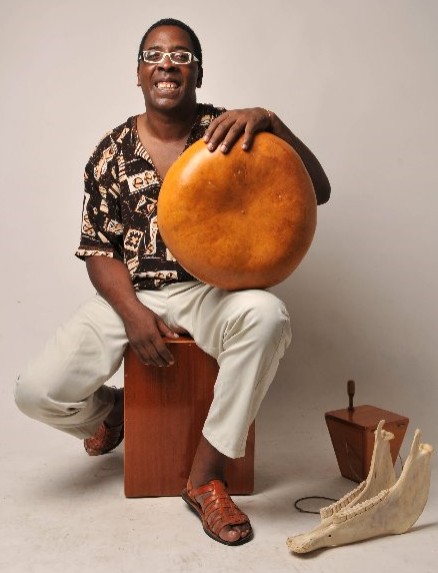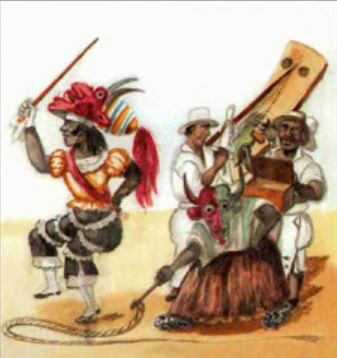
A Guide to Afro-Peruvian Musical Instruments
19 November, 2012I’m willing to bet that not a lot of people know the names of the percussion instruments that have been created by the Afro-Peruvian community. In fact, I’m willing to bet that very few people even know of the existence of Afro-Peruvians, much less that they have their own music and unique musical instruments, some of which are now in used in jazz, flamenco and other musical forms we’re more familiar with. This guide aims to give you an introduction to these instruments.

So let’s get started and have a look at the cajón.
In case you’ve never heard of the cajón, it´s a wooden box, about a foot and a half tall by about 6 inches wide and 6 inches deep. The sound hole is in the back. You usually sit on it as you play, and you play it with your hands.
There are two types of cajón in use around the world today. One was developed by Afro-Cubans, and doesn´t concern us here. The other one, called the Peruvian cajón, is the one you´ll see most often, and it comes out of the Afro-Peruvian community. It has a bright sound, and has become a staple of most Latin music from South America, much of Latin jazz, and even, as already noted, in modern flamenco and flamenco fusion (but not, please, in the traditional flamenco).
http://www.youtube.com/watch?v=7vLFrco6nVQ
In the above clip we see Lalo Izquierdo playing rhythms from many parts of the world on the cajón. This clip comes from Palomino Productions’ documentary, A Zest for Life: Afro-Peruvian Rhythms, a Source of Latin Jazz.
The Peruvian cajón is not the only percussion instrument developed by Afro-Peruvians. Before going any further though let’s just take a quick detour into how these Afro-Peruvian instruments came to be. Afro-Peruvians are the descendants of the Africans kidnapped and enslaved, then brought to Peru to work the sugar cane and cotton plantations, and do other hard labour. Slavery was in effect in Peru from just after the Spanish conquest until the mid 19th century.
The Spanish plantation owners, having heard of the “talking drums” of Africa and not wanting their slaves communicating with each other, forbade Africans to play drums, so the slaves – the Afro-Peruvians – developed new musical instruments. Going back to the cajón, for example, it is said to have developed out of the wooden packing crates that merchandise was shipped in, since Africans slaves were the principal dock workers for many decades, and they used to beat out rhythms on the crates after they unloaded the ships.
Now, back to those percussion instruments.
Another Afro-Peruvian percussion instrument is the cajita, or “little box.” The cajita, which is played by opening and closing the top, and also hitting the top and sides with a stick, comes from the box used in churches into which you were supposed to put your money offering.
Another percussion instrument is the quijada de burro, or “donkey´s jaw.” The quijada de burro is made out of…a donkey´s jawbone. Pretty resourceful, if you ask me. Donkeys were, and still are, a very common draft animal in the Peruvian countryside and, well, donkey´s do die after a while.
To use the quijada de burro as a percussion instrument, you first clean the teeth and scrape off any flesh. Then, you hit it with the side of your hand, and run a stick over the tops of the teeth.
Afro-Peruvians also created percussion instruments out of huge gourds, like the checo and the angara. They made drums out of hollowed logs and ceramic jars. In fact, they made percussion instruments out of almost anything they could get their hands on. Of these various instruments, the checo is making a come-back. The angara seems to have disappeared, and the various drums are today mostly being made as museum pieces, to show how inventive the community was.

But you shouldn´t think that Afro-Peruvians only used percussion in their music. Nineteenth century watercolours show them playing a harp, and in today´s Afro-Peruvian communities, the violin is often used, as is the guitar.
The bottom line is that Afro-Peruvians were, and are, very inventive, and both rhythms and music have obviously been important to them. Looking beyond their own music, they contributed to the richness of percussion instruments used in many other styles of music, most notably through their creation of the cajón, but also to a lesser extent, the cajita, checo, quijada de burro, and others.
Eve A. Ma is a film-maker and author responsible for the recent A Zest for Life: Afro-Peruvian Rhythms, a Source of Latin Jazz documentary about Afro-Peruvian music and dance that she produced and directed. To listen to some music from the documentary, and watch a short video about an Afro-Peruvian celebration, as well as find out more about the docuemntary, visit palominoprodvd-cd.com.
Follow Sounds and Colours: Facebook / Twitter / Instagram / Mixcloud / Soundcloud / Bandcamp
Subscribe to the Sounds and Colours Newsletter for regular updates, news and competitions bringing the best of Latin American culture direct to your Inbox.

